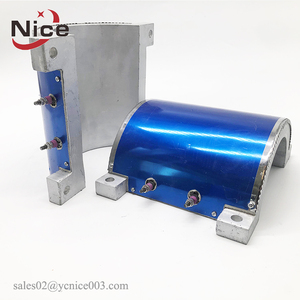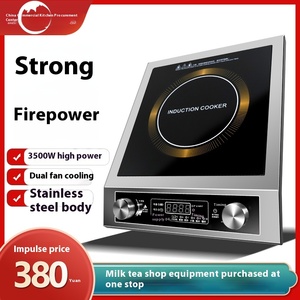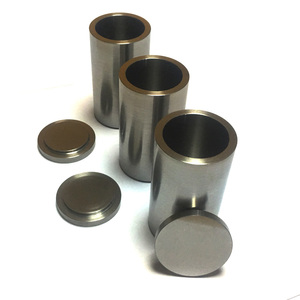
All categories
Featured selections
Trade Assurance
Buyer Central
Help Center
Get the app
Become a supplier

(862 products available)


























Market Overview: The pipeline welding induction heater market is poised for notable growth, mirroring trends in the broader industrial machinery sector. While specific market size data for pipeline welding induction heaters is limited, the global welding equipment market, valued at approximately $19.4 billion in 2023, is expected to expand at a CAGR of 5.6% through 2030, according to BCC Research. This growth is fueled by increasing demand for efficient welding solutions across various industries, including oil and gas, construction, and manufacturing. The rise in infrastructure development and energy projects globally also contributes to the positive outlook, particularly in regions such as North America and Asia-Pacific, where significant investments are being made.
Consumer Behavior and Market Drivers: The shift towards automation and advanced welding technologies is reshaping consumer preferences in the pipeline welding sector. As industries focus on enhancing productivity and reducing operational costs, pipeline welding induction heaters are becoming increasingly popular due to their efficiency and precision. Moreover, growing environmental regulations are pushing manufacturers to adopt cleaner and more sustainable welding practices. Key players in the market are leveraging these trends by investing in research and development to innovate and enhance their product offerings. Additionally, the demand for skilled labor in welding operations is creating opportunities for training and development programs, further driving market growth. Companies are also exploring niche markets, such as specialized welding solutions for renewable energy projects, which present new avenues for expansion.
Pipeline welding induction heaters are versatile machines used to weld pipes of various materials. They are commonly used in industries such as oil and gas, construction, and manufacturing, where high-quality welds are essential for structural integrity and leak prevention. Different types of pipeline welding induction heaters exist for use, as listed below:
High-Frequency Induction Heaters:
High-frequency induction heaters utilize high-frequency alternating current (AC) to create a magnetic field that heats the metal. These devices are suitable for applications that require quick heating and high productivity. Also, they are ideal for welding mild and low alloy steels, high-strength steels, stainless steels, and aluminum pipes.
Solid-State Induction Heaters:
Solid-state induction heaters use power semiconductors to control and regulate the heating process. They provide precise control over the weld parameters, resulting in consistent and repeatable welds. Solid-state induction heaters are suitable for high-production environments where uniform weld quality is critical.
Frequency Change Induction Heaters:
These induction heaters have variable frequency power supplies that allow adjusting the heating speed and penetration depth for different pipeline materials and thicknesses. Also, they enable quick changeovers between weld setups, reducing downtime and increasing productivity.
Transportable or Portable Induction Heaters:
These induction heaters come as compact and lightweight induction heaters transportable or portable as a complete unit. They allow induction heating in field or remote locations, tightening access to power sources. Also, the portable induction heaters can reach limited areas where traditional heating methods cannot.
Induction heaters for pipeline welding have various specifications depending on the model or type. The specifications to consider mainly are the power rating, frequency range, the diameter of the pipes the heater can work on, water flow rate, and the temperature it can reach.
To maintain the induction welding heater for pipelines and prolong its lifespan, follow the care and maintenance tips below:
Induction heaters have a lot of usage scenarios in different industries. The following are some of the main application areas for induction heating technology.
Induction heating is commonly used in the oil and gas industry for welding pipe fittings. In this industry, there are frequent pipeline fittings. An induction heater is capable of quickly and uniform welding fittings to pipes without creating weak spots. As a plus, welding with an induction heater creates strong and smooth seams that won't catch on debris flowing through the pipeline.
Joints in high-pressure pipelines are also welded using induction heaters. The precision offered by induction heating makes it possible to create tight joints in high-pressure pipelines by ensuring the right amount of heat is applied to the weld. Induction heaters allow operators to have better control while welding, thereby creating joints that can withstand high pressure.
Repair work can also be done on high-pressure pipelines using an induction heater. Induction heating allows repair pipelines to be high pressure without removing them. The direct and accurate heating offered by inductionators helps to make spot repairs and also allows for the quick replacement of components.
Gas pipelines are also welded using induction heaters. Heating coils is more efficient when it comes to welding gas pipelines compared to methods like manual metal arc or tungsten inert gas. This is because induction heating provides uniform and consistent heating which is important when welding gas pipelines. It also minimizes distortions and oxidation of the metal, thereby guaranteeing the integrity of the gas pipeline.
When working with thick-walled pipes, induction heaters can be used. It might be difficult to weld thick-walled pipes using traditional methods because it might result in uneven welding and slow speeds. However, induction heaters offer high power capabilities and focus on the heat, which makes it easy to weld thick-walled pipes precisely and quickly.
Finally, induction heaters can be used for pre-heating pipes before welding. Pre-heating enhances weld quality by reducing the risk of cracking and improving the overall pipe weld. Induction heaters ensure uniform pre-heating of pipes.
When selecting an induction heater for pipeline welding, it's vital to choose the induction heating machine carefully. Consider these key factors to ensure the induction heater meets specific needs:
Q1: What are the trends in the pipeline induction heater market?
A1: The global heater market was valued at $232.49 billion in 2022. It is expected to reach $246.82 billion in 2023. Furthermore, it is expected to grow at a CAGR of 5.1% and reach $319.99 billion by 2030. The induction pipeline welding trend is part of this growth. Demand for induction heaters has increased due to greater focus on efficient energy use. Induction heaters are energy efficient, reducing heating costs and energy use. Buyers can expect induction heating technology to evolve, with smarter, more efficient induction heaters on the market.
Q2: What is the impact of instruction heating method on welding pipes?
A2: The induction heating method improves the quality and efficiency of pipe welding. It heats the pipe evenly, reducing deformation. This results in high-quality welds that meet specifications. The consistent heat also boosts productivity by shortening cycle times. Induction heating is automated, reducing manual work and lowering labor costs. Induction heating improves the economy and quality of pipe welding.
Q3: Is there a difference between an induction heater and a welding machine?
A3: Yes, there is a difference. An induction heater heats materials using electromagnetic induction. It is used to heat pipes before welding, among other applications. A welding machine offers heat energy to fuse materials together. It uses different methods like MIG, TIG or laser. An induction pipe welder combines the two functions.